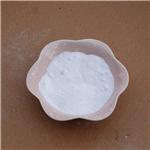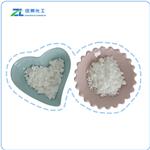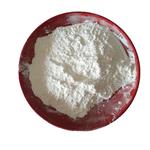- Tin(II) fluoride
-

- $0.00 / 1KG
-
2025-04-15
- CAS:7783-47-3
- Min. Order: 50KG
- Purity: 99%
- Supply Ability: 500000kg
- Tin(II) fluoride
-

- $55.00/ kg
-
2025-04-15
- CAS:7783-47-3
- Min. Order: 1kg
- Purity: 99%
- Supply Ability: 5000kg/week
- Tin(II) fluoride
-

- $0.00 / 25KG
-
2025-03-21
- CAS:7783-47-3
- Min. Order: 1KG
- Purity: 99%
- Supply Ability: 50000KG/month
|
| | Tin(II) fluoride Basic information |
| | Tin(II) fluoride Chemical Properties |
| Melting point | 215°C | | Boiling point | 850°C | | density | 4.57 g/mL at 25 °C (lit.) | | storage temp. | -20°C | | solubility | soluble in H2O; insoluble in ethanol, ethyl ether,chloroform | | form | Powder, Crystals or Crystalline Powder | | Specific Gravity | 4.57 | | color | White to off-white | | biological source | human | | Water Solubility | Soluble in potassium hydroxide and potassium fluoride. Insoluble in water, ethanol, ether and chloroform. | | Sensitive | Air & Moisture Sensitive | | Merck | 14,8784 | | crystal system | Monoclinic | | Space group | C2/c | | Lattice constant | | a/nm | b/nm | c/nm | α/o | β/o | γ/o | V/nm3 | | 1.336 | 0.491 | 1.379 | 90 | 109.1 | 90 | 0.8547 |
| | Exposure limits | ACGIH: TWA 2 mg/m3; TWA 2.5 mg/m3
NIOSH: IDLH 100 mg/m3; IDLH 250 mg/m3; TWA 2 mg/m3 | | Stability: | Stable. Non-flammable. Avoid contact with water or oxidizing agents. Moisture-sensitive. | | InChIKey | ANOBYBYXJXCGBS-UHFFFAOYSA-L | | LogP | -1.357 (est) | | CAS DataBase Reference | 7783-47-3(CAS DataBase Reference) | | NIST Chemistry Reference | Tin difluoride(7783-47-3) | | EPA Substance Registry System | Tin fluoride (SnF2) (7783-47-3) |
| | Tin(II) fluoride Usage And Synthesis |
| Chemical Properties | Stannous fluoride is a white crystalline solid with a bitter, salty taste. | | Chemical Properties | white crystals or powder | | Uses | Dental caries prophylactic. | | Uses | Stannous fluoride (SnF2) is used as a toothpaste additive to help prevent tooth decay. | | Uses | Tin(II) fluoride is used in the prevention of dental caries. It is an active ingredient in toothpastes. | | Definition | ChEBI: Stannous fluoride is an inorganic fluoride salt. | | General Description | White crystalline solid. Sinks and mixes with water. | | Air & Water Reactions | Water soluble. | | Reactivity Profile | Tin(II) fluoride, a strong reducing agent, is incompatible with oxidizers. Avoid contact with acids - HF fumes may be produced [USCG, 1999]. | | Hazard | Toxic by ingestion, strong irritant to skin
and tissue. | | Health Hazard | EYES: Severe irritation - corrosive, irreversible. SKIN: Corrosive on abraded skin, no effect on intact skin. | | Flammability and Explosibility | Not classified | | reaction suitability | core: tin
reagent type: catalyst | | Biological Activity | The wild type human brahma-related gene 1 (Brg1) encodes a protein of 1,647 amino acids th at contains a conserved domain of the SWI2/SNF2 family necessary for normal mitotic growth and transcription regulation. BRG1 is an essential component of the SWI/SNF chromatin remodeling complexes and implicated in multiple functions through its interaction with different proteins, including the tumor suppressor protein pRb, serine-threonine kinase LKB1, and other transcription factors. Although Brg1 is involved in chromatin remodeling as a complex with other SWI/SNF proteins, purified BRG1 itself is capable of remodeling mono-nucleosomes and nucleosomal arrays in vitro. Mutations of Brg1 have been found in multiple tumor cell lines. | | Safety Profile | Poison by ingestion and
intraperitoneal routes. Questionable
carcinogen. Mutation data reported. When
heated to decomposition it emits toxic
fumes of F-. See also TIN COMPOUNDS. | | Potential Exposure | Stannous fluoride is used in dental caries (tooth decay); as an ingredient of cavity-preventing toothpastes. | | Shipping | UN2811 Toxic solids, organic, n.o.s., Hazard Class: 6.1; Labels: 6.1-Poisonous materials, Technical Name Required. UN2923 Corrosive solids, toxic, n.o.s., Hazard class: 8; Labels: 8-Corrosive material, 6.1Poisonous material, Technical Name Required | | Incompatibilities | A strong reducing agent. Incompatible with oxidizers (chlorates, nitrates, peroxides, permanganates, perchlorates, chlorine, bromine, fluorine, etc.); contact may cause fires or explosions. Keep away from alkaline materials, strong bases, strong acids, oxoacids, epoxides. Reacts with acids, forming hydrogen fluoride fumes. Reacts violently with chlorine and metal nitrates. Reacts with metals releasing flammable hydrogen gas. |
| | Tin(II) fluoride Preparation Products And Raw materials |
|